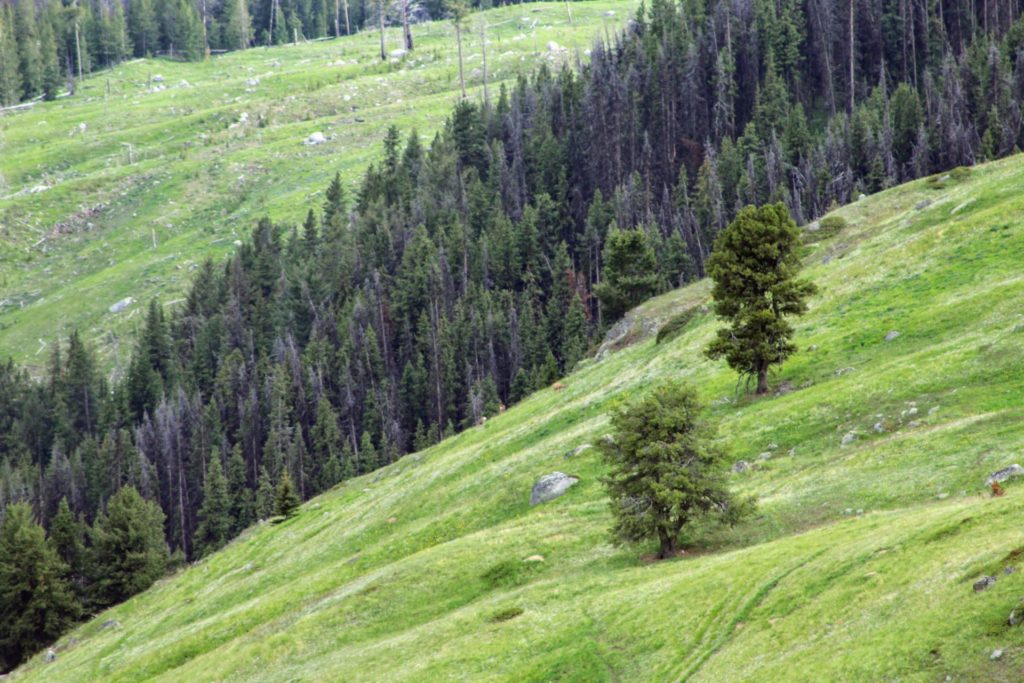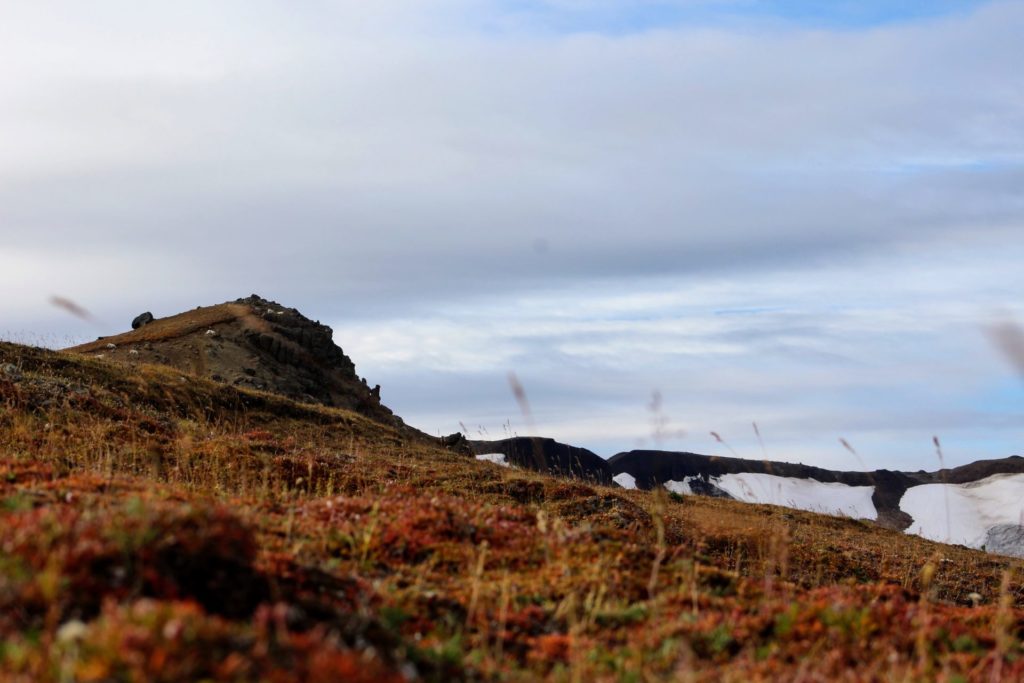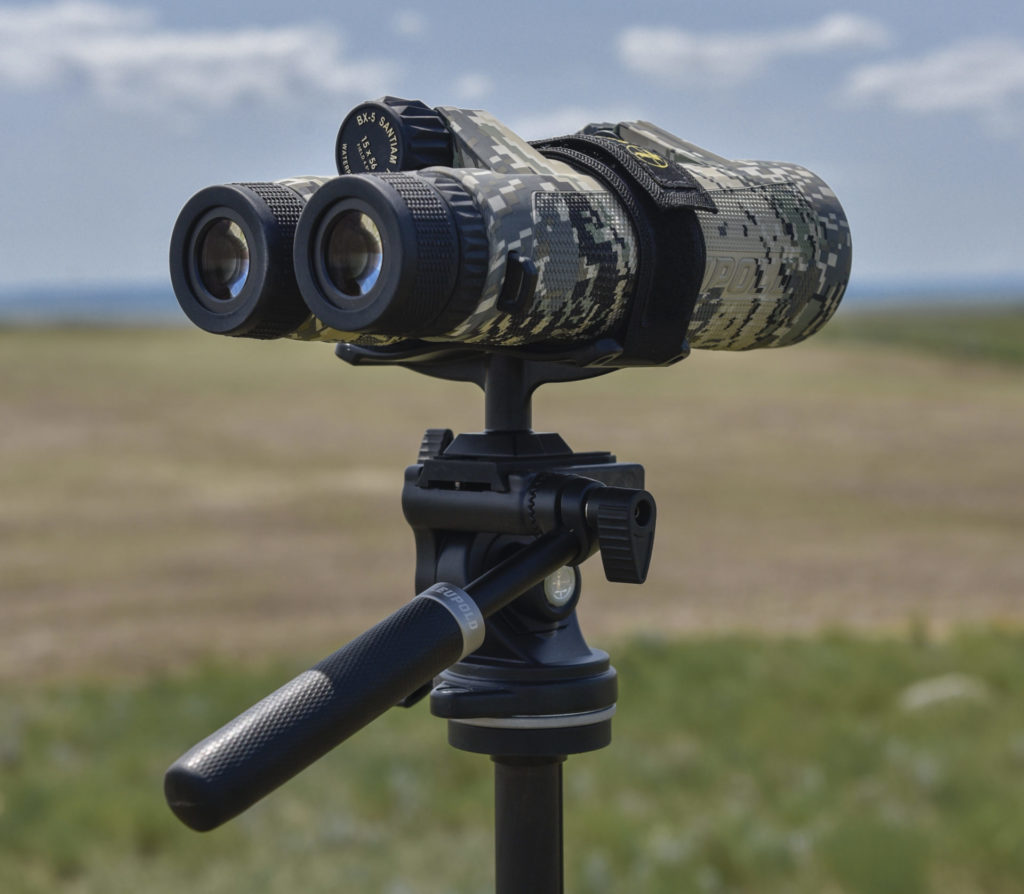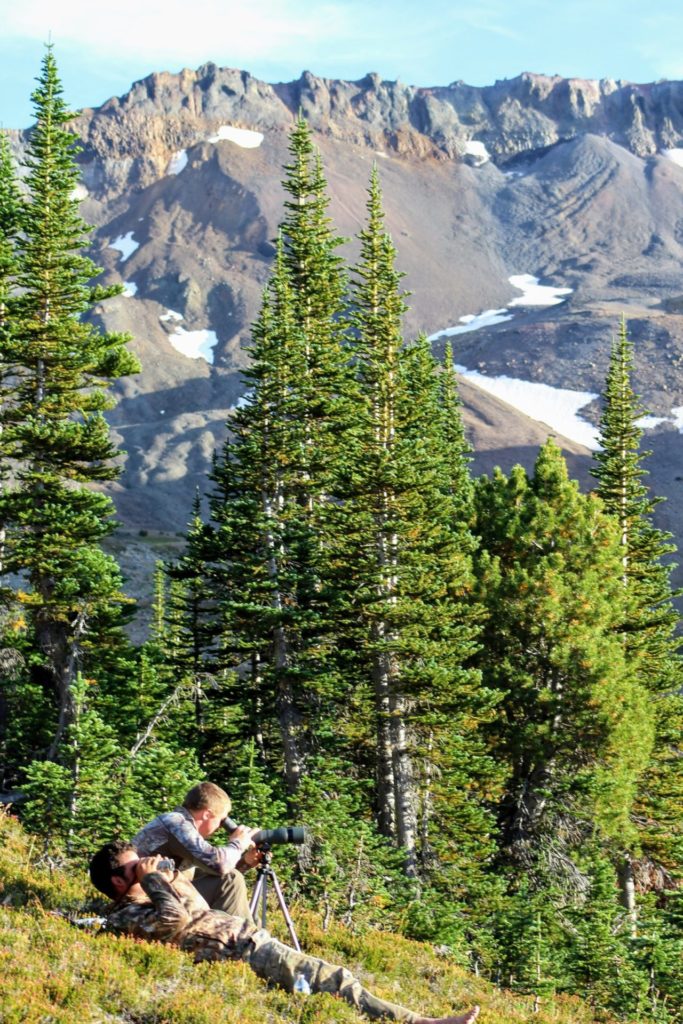Busted! A flick of his ear gave him away, disclosing an otherwise perfect hiding spot. Bedded in a hollow at the edge of the timber, that buck felt safe and secure. Had I not spotted his tiny ear movement, he might have gone undetected. But now, from a distance, I had all the time I needed both to size up the buck and to lay out a clean shot.
Advertisement

Finding game among twisted snarls of deadfall, thick shrubs, rock and broad, open meadows is a critical hunting skill, one that comes from time in the field. Seasoned hunters can develop what seems to be a sixth sense for finding animals, to the amazement of those with fewer miles in the wilderness. “How did you see that deer?!” It’s not magic! Learning these techniques takes patience, time and having the right equipment to see those concealed animals.
Elements Of Camouflage & Concealment
To learn the skill of searching, we must take a step back to understand what makes animals so hard to find in the first place.
Advertisement
Art of camouflage, according to military training manuals, has seven main elements (sometimes referred to as the 7-Ss). They include shape, shine, shadow, silhouette, surroundings, sudden movement and smell. We’ll focus on the six visual clues for this article.
Animals have evolved characteristics and behaviours to help them hide and avoid predators like us. In searching for game, detecting one or more of these cues help hunters hone in on their quarry.
Advertisement
Shape is an easy way of identifying game. If it looks like a deer, it is a deer… most of the time. But we’ve all been there, after several hours of searching we start to see game where none exist – fallen trees that look like bedded elk, a black rock that looks like a moose or branches that look like a big rack. It pays to spend an extra moment studying each anomaly in the landscape. The animals are out there, you just need patience and magnification to find them.
Surroundings make a big difference for identifying a shape, since contrast will make the animal stand out. A white mountain goat on a dark, rocky slope is easier to see than a tall, black moose deep in the dark timber.

Shadows only stand out in certain terrain. If you are glassing a coulee or washout in desert country, a dirt-coloured deer will blend in, but their black shadow certainly stands out on a sunny day. In the forest, shadows are just a part of the background, and animal shadows simply blend in.
Shine is not something we often associate with living critters, but more than once the glint of an antler has caught my attention, alerting me to a nearby buck. Shine off a duck’s flapping wings catches the eye, often before we notice the movement. In the right conditions, shine is a tell-tale sign of something different. But remember that shine works both ways, a flash from your riflescope may spook your prey. Keeping the sun at your back helps you stay hidden.
Silhouettes are most noticeable on ridgelines at dawn and dusk. Observing a sky-lined animal is a quick way to determine if you want a better look. On the flip side, to prevent my silhouette from alerting passing animals, I like to stay below the top of the ridge.
Sudden movement is one of the easiest things for our eyes to detect. Ear twitches and tail flicks will give away deer. A dog chasing an object is much more likely to find it if it’s moving. I’ve watched my dog run right past a brightly coloured bumper because she hadn’t seen it land in the grass. If she sees the bumper in the air, she’ll find it every time. At close distances, the flick of a tail, twitch of an ear or moving antlers are easy to spot. At longer range, a running animal is obvious while a slowly walking one is harder to spot.
Pattern Recognition
A skilled hunter is a keen observer. With practice, we all develop a search image – the ability to identify an object when seeing only a part of it. Have you ever lost your keys in the grass? Finding them is a lot like finding an animal. Your eyes scan the area quickly for key-shaped objects, pausing momentarily each time something matches your search image. In the end, it may be a shine off a key ring or recognizing their shape. The ability to develop that search image is essential.
Optics For Glassing
Optics are a vital part of finding animals. Compared to many of the critters we hunt, humans have poor eyesight. In heavy cover, 6x to 8x binoculars are good. At further distances, 10x to 12x binoculars are light enough to carry while providing enough magnification to see details at a distance. As magnification increases, so too does the need for light and a support to hold it steady. Spotting scopes are designed for high magnification, but it comes at the cost of increased weight, lower light transmission and magnification of shake and haze.

Exit pupil is the amount of focused light that hits the eye. Calculate an optic’s exit pupil size by dividing the magnification by the diametre of the objective lenses. For example, a 10×42 binocular has a 4.2-millimetre exit pupil. A 20-60x spotting scope with a 60-millimetre objective lens has a three-millimetre at 20x and one-millimetre exit pupil at 60x magnification. Pupil size in adults varies from two to f millimetres in diametre in bright light, to four to eight millimetres in the dark.
In daylight, even compact binoculars with smaller objective lenses are enough because our eyes can only use the light entering the pupil. If the exit pupil is bigger than our pupil, the extra light is not needed. In low light, when our eyes dilate to see better in the dark, we can take advantage of optics with larger exit pupil values. And according to the calculation, as magnification increases, the exit pupil decreases. In layman’s terms: to have enough light to see in the dawn and dusk, choose optics with larger objective lenses, lower magnification or both.
When light travels through a lens, some light reflects off its surface and is lost. Manufacturers deposit thin chemical coatings on lens surfaces to improve light transmission. Binoculars and spotting scopes have multiple lenses inside. Each lens may lose up to five per cent of the light passing through it. A poor optic may lose as much as 35 per cent of the light entering the objective. Conversely, an optic with high-quality coated lenses may transmit 95 per cent of the available light to the eye. Some coatings are designed to make specific colours pop. Choose an optic to match your hunting conditions and weight requirements.
Scanning
Search likely locations first. If you’ve spent time in an area, you’ll start to know where animals like to move. We are all creatures of habit. In the forest or on the mountainside, game trails are the major movement corridors. And like humans, given a choice, animals will follow the path of least resistance.
Next, it’s time to glass the entire area. From a vantage point, scan back and forth across the habitat. Hold the binoculars (or scope) still in one spot, and let your eyes wander back and forth within the field of view. Examine anything that looks out of place or any movement that catches your eye. If your search is fruitless, reposition and search again. Repeat until the entire landscape has been scanned. It is helpful to have a map or aerial image to find topographical features that may funnel animals.
A hasty search can be used while still-hunting, to check clearings, cut lines or other likely areas. It’s also used during a stalk to verify that the target hasn’t moved or noticed you. If spotted, stop and wait for the deer to relax. Remember, your movement is easy to see, too. I’ve been caught in the open wearing blaze orange, but when I stop walking and slowly crouch down, the deer thinks the danger is gone.
Get Comfy
On extended glassing sessions, comfort is an important consideration. Comfort starts by being warm and dry. When I’m settling down for a serious session of glassing, I put on a down jacket and a windproof outer layer. Next, find a soft place to sit. There are a few options for lightweight seats. Recently I’ve settled on a short sleeping pad. Using the philosophy that most gear should serve multiple purposes, the foam pad makes an excellent seat while serving double duty as a place for an afternoon nap in the field. A silver side reflects body heat back, while a bright orange side doubles as a signalling panel in an emergency. And speaking of emergencies, cutting off segments of the folded foam pad makes a super splint if you should be unfortunate enough to need it.
Spotting scopes are sold with either a straight or angled eyepiece, and which one you choose is a matter of personal preference. Straight eyepiece scopes are easier to align on distant targets, but require a taller tripod, adding extra weight and less stability in the wind. Angled eyepieces mount lower, so a compact support is all that’s needed to use them. Long sessions behind binocular are challenging, too. A binocular tripod mount is a good investment, to relieve neck and arm strain.

Game On
Glassing is a game of patience. When the hours wear on and your eyes are tired, the reward comes when that brown, deer-shaped lump you’ve been studying all afternoon stands up and starts to move. Then it’s game on! Being equipped and ready to catch that twitch of an ear or a flick of a tail is the first step towards filling your tag. Good luck!
